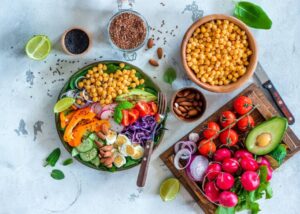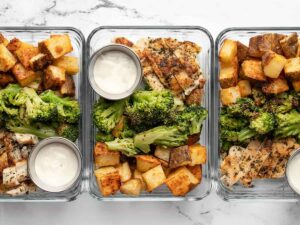Clean Bulk vs. Dirty Bulk: An Introduction
When embarking on a muscle-building journey, understanding the differences between clean bulking and dirty bulking is crucial. These two distinct approaches to gaining muscle mass vary significantly in their nutritional focus, impact on health, and long-term effectiveness. By delving into the nuances of each method, you can make informed decisions that align with your fitness goals and promote sustainable progress. Join us as we explore the intricacies of clean versus dirty bulking, debunk common misconceptions, and discover which strategy best suits your fitness aspirations. Let the Clean Bulk vs. Dirty Bulk showdown begin!
Clean Bulk vs. Dirty Bulk: Nutritional Quality
When comparing clean bulk vs dirty bulk, one of the primary factors to consider is nutritional quality. Nutritional quality plays a crucial role in determining the effectiveness and health implications of your bulking strategy.
Macronutrient Balance
Clean bulking emphasizes a well-balanced diet rich in macronutrients: proteins, carbohydrates, and fats. Protein sources typically include lean meats, fish, eggs, and plant-based options like beans and lentils. Carbohydrates are sourced from whole grains, fruits, and vegetables, while healthy fats come from nuts, seeds, avocados, and olive oil. This balanced approach ensures that your body receives all the necessary nutrients to build muscle and recover effectively.
In contrast, dirty bulking often involves consuming high-calorie foods with less regard for macronutrient quality. This can include fast food, sugary snacks, and processed items that are calorie-dense but may lack essential nutrients. While it can lead to rapid weight gain, the macronutrient balance is often skewed, which may affect muscle quality and overall health.

Clean Bulk vs. Dirty Bulk: Micronutrient Intake
Clean bulk diets are rich in micronutrients, including vitamins and minerals essential for optimal body function. Eating a variety of fruits and vegetables ensures an adequate intake of vitamins A, C, E, and K, as well as minerals like magnesium, potassium, and calcium. These nutrients support immune function, bone health, and recovery processes.
Dirty bulking diets, however, often fall short in providing these essential micronutrients. The reliance on processed foods and sugary snacks can lead to deficiencies in vitamins and minerals, which can negatively impact your health and performance in the long term.

Clean Bulk vs. Dirty Bulk: Food Sources
The sources of food in a clean bulk diet are typically whole, unprocessed, and nutrient-dense. Foods like grilled chicken, quinoa, sweet potatoes, and leafy greens are staples. These foods provide sustained energy and help maintain stable blood sugar levels, which is beneficial for muscle growth and overall health.
In a dirty bulk, the focus shifts to convenience and calorie density. Foods such as pizza, burgers, fries, and sugary beverages become common. While these foods can quickly add calories, they often come with unhealthy fats, excessive sugars, and artificial additives, which can hinder health and performance.

Conclusion
In the debate of clean bulk vs dirty bulk, nutritional quality is a defining factor. Clean bulking prioritizes nutrient-dense, balanced meals that support muscle growth and overall health, while dirty bulking often sacrifices nutritional quality for calorie quantity. Making informed choices about your diet can significantly impact your bulking success and long-term well-being.
Clean Bulk vs. Dirty Bulk: Caloric Intake
When examining clean bulk vs dirty bulk, caloric intake is a critical aspect that distinguishes these two approaches to bulking. Both methods aim to create a caloric surplus to support muscle growth, but the way this surplus is achieved, and its implications can vary significantly.
Total Calorie Consumption
In a clean bulk, the focus is on achieving a moderate caloric surplus, typically around 250-500 calories above maintenance levels. This careful approach helps ensure that the majority of weight gained is lean muscle rather than fat. The emphasis is on quality calories from nutrient-dense foods, making it easier to control and optimize body composition.
Dirty bulking, on the other hand, often involves a larger caloric surplus, sometimes exceeding 500 calories above maintenance. The goal is rapid weight gain, which can include significant fat mass in addition to muscle. This approach is less concerned with the quality of calories consumed, focusing more on quantity to achieve quick results.

Caloric Surplus and its Impacts
The caloric surplus in clean bulking is designed to be gradual and controlled, which minimizes excessive fat gain. By consuming whole foods rich in proteins, complex carbohydrates, and healthy fats, individuals can maintain a steady increase in muscle mass while keeping fat accumulation at bay. This method is generally more sustainable and aligns with long-term health goals.
Conversely, the caloric surplus in dirty bulking is often achieved through high-calorie, low-nutrient foods like fast food, sugary snacks, and processed items. This can lead to rapid weight gain but also a higher proportion of body fat. While this approach may produce faster results in terms of weight on the scale, it often requires a more intense cutting phase afterward to shed the excess fat, which can be challenging and time-consuming.

Conclusion
In the context of clean bulk vs dirty bulk, caloric intake strategy plays a pivotal role. Clean bulking promotes a moderate and controlled caloric surplus, emphasizing nutrient quality to achieve lean muscle gain. Dirty bulking, however, focuses on a larger caloric surplus with less regard for nutritional value, leading to faster but often less desirable weight gain. Understanding these differences can help you choose the right approach for your bulking goals and overall health.

Clean Bulk vs. Dirty Bulk: Muscle Gain
When considering clean bulk vs dirty bulk, understanding how each approach impacts muscle gain is essential for making an informed decision about your bulking strategy. Both methods aim to increase muscle mass, but the quality and efficiency of muscle gain can differ significantly.
Rate of Muscle Gain
Clean bulking typically results in a slower, more gradual increase in muscle mass. By consuming a controlled caloric surplus and focusing on nutrient-dense foods, the body is supplied with the necessary building blocks to grow muscle efficiently. This method ensures that muscle gain is steady and sustainable, minimizing unnecessary fat accumulation.
Dirty bulking often leads to a faster rate of muscle gain due to the higher caloric intake. However, this rapid increase is accompanied by a significant amount of fat gain. While muscle mass does increase, the higher proportion of body fat can obscure muscle definition and result in a less aesthetic physique.

Muscle Quality and Definition
Clean bulking emphasizes high-quality muscle growth. The focus on lean proteins, complex carbohydrates, and healthy fats provides the body with optimal nutrition for muscle repair and growth. This approach leads to well-defined muscles and a more sculpted appearance. The lean muscle gained through clean bulking is not only aesthetically pleasing but also functional and strong.
In contrast, dirty bulking can result in muscle gain that is less defined. The excess calorie consumption, often from low-nutrient, high-calorie foods, leads to a higher percentage of fat gain. This can mask muscle definition and result in a bulkier, less toned appearance. While muscle strength may still improve, the overall quality and visibility of the muscle can be compromised.

Conclusion
In the debate of clean bulk vs dirty bulk, muscle gain is a key factor to consider. Clean bulking promotes steady, high-quality muscle growth with minimal fat gain, leading to a well-defined and strong physique. Dirty bulking, while resulting in faster muscle gain, often comes with significant fat accumulation, compromising muscle definition and overall appearance. Understanding these differences can help you choose the best bulking strategy to achieve your muscle-building goals.

Clean Bulk vs. Dirty Bulk: Fat Gain
When comparing clean bulk vs dirty bulk, fat gain is a critical factor to consider. Both methods aim to increase muscle mass, but the amount and rate of fat gain can vary significantly between the two approaches.
Rate of Fat Gain
In clean bulking, the rate of fat gain is generally slower and more controlled. By maintaining a moderate caloric surplus and focusing on nutrient-dense foods, the body gains muscle with minimal excess fat. This approach helps maintain a leaner physique and makes the cutting phase easier and less drastic.
Dirty bulking, on the other hand, often results in a rapid increase in fat mass. The larger caloric surplus, frequently achieved through high-calorie, low-nutrient foods, leads to significant fat accumulation alongside muscle gain. This method can quickly add weight, but much of it may be fat, which can obscure muscle definition and lead to a bulkier, less aesthetic appearance.

Long-term Fat Management
Clean bulking facilitates better long-term fat management. The gradual and controlled approach allows for easier monitoring of body composition and adjustments to the diet as needed. As a result, the transition to a cutting phase becomes smoother, requiring less drastic dietary changes to shed excess fat.
In contrast, dirty bulking can complicate long-term fat management. The significant fat gain during the bulking phase can make the cutting phase more challenging and prolonged. Shedding the excess fat gained during dirty bulking often requires more intense and sustained dietary restrictions, which can be difficult to maintain and may negatively impact muscle retention.

Conclusion
In the clean bulk vs dirty bulk debate, fat gain is a crucial consideration. Clean bulking promotes a slower, more controlled rate of fat gain, making it easier to maintain a lean physique and manage fat in the long term. Dirty bulking, while leading to rapid weight gain, often results in significant fat accumulation, complicating the cutting phase and potentially obscuring muscle definition. Understanding these differences can help you choose the best bulking strategy to achieve your fitness goals while managing fat gain effectively.
/men-running-on-the-gym-treadmill-171582786-5ad7eab41f4e130038eae6f6.jpg)
Clean Bulk vs. Dirty Bulk: Health Impact
When discussing clean bulk vs dirty bulk, it’s essential to consider the health impact of each approach. Both methods aim to increase muscle mass, but they can have significantly different effects on overall health and well-being.
Cardiovascular Health
Clean bulking supports cardiovascular health by emphasizing nutrient-dense foods rich in vitamins, minerals, and healthy fats. Foods like lean proteins, whole grains, fruits, and vegetables provide essential nutrients that support heart health and reduce the risk of cardiovascular diseases. The moderate caloric surplus in clean bulking helps maintain healthy cholesterol levels and blood pressure.
In contrast, dirty bulking often involves consuming high-calorie, processed foods that are typically high in unhealthy fats, sugars, and sodium. This diet can increase the risk of cardiovascular issues such as high cholesterol, hypertension, and heart disease. The excessive intake of unhealthy foods during dirty bulking can lead to long-term negative effects on cardiovascular health.
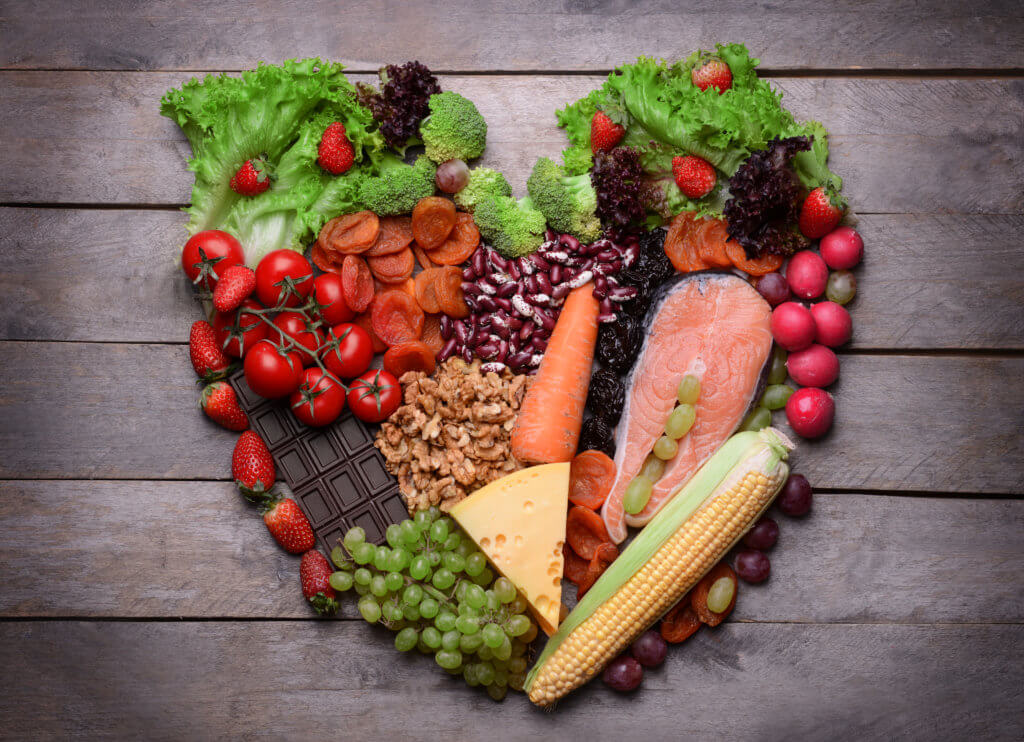
Metabolic Health
Clean bulking promotes metabolic health by providing the body with balanced nutrients and avoiding excessive spikes in blood sugar levels. The focus on whole foods and complex carbohydrates helps maintain stable energy levels and supports a healthy metabolism. This approach can prevent metabolic disorders such as insulin resistance and type 2 diabetes.
Dirty bulking, however, often leads to poor metabolic health due to the high intake of sugary and processed foods. These foods can cause rapid fluctuations in blood sugar levels and contribute to insulin resistance over time. The high caloric surplus and poor nutritional quality of dirty bulking can increase the risk of developing metabolic conditions.
Clean Bulk vs. Dirty Bulk: Overall Well-Being
Clean bulking positively impacts overall well-being by promoting a balanced diet that supports physical and mental health. The inclusion of a variety of nutrient-dense foods ensures that the body receives all the necessary vitamins and minerals for optimal function. This balanced diet can enhance mood, energy levels, and cognitive function.
Dirty bulking can negatively affect overall well-being due to the consumption of low-nutrient, high-calorie foods. The lack of essential nutrients can lead to deficiencies, affecting energy levels, mood, and cognitive performance. Additionally, the rapid weight gain associated with dirty bulking can cause physical discomfort and strain on the body.

Conclusion
In the context of clean bulk vs dirty bulk, the health impact is a significant consideration. Clean bulking supports cardiovascular and metabolic health and enhances overall well-being through a balanced, nutrient-dense diet. Dirty bulking, while promoting rapid weight gain, can negatively impact cardiovascular and metabolic health and overall well-being due to the high intake of unhealthy foods. Understanding these health impacts can help you choose the best bulking strategy for your long-term health and fitness goals.

Clean Bulk vs. Dirty Bulk: Performance in Training
When evaluating clean bulk vs dirty bulk, one important factor to consider is how each approach affects performance in training. The type and quality of calories consumed can have a significant impact on energy levels, strength gains, and overall endurance during workouts.
Clean Bulk vs. Dirty Bulk: Energy Levels
Clean bulking typically results in more stable and sustained energy levels. By consuming a balanced diet rich in complex carbohydrates, lean proteins, and healthy fats, your body receives a steady supply of nutrients that support prolonged energy throughout the day and during workouts. Whole foods like oatmeal, sweet potatoes, and brown rice provide slow-releasing carbohydrates that help maintain consistent energy levels.
Dirty bulking, however, often involves consuming high-sugar and high-fat foods that can cause spikes and crashes in energy levels. Foods like sugary snacks, fast food, and processed items can lead to quick bursts of energy followed by periods of fatigue. These fluctuations can negatively impact workout performance and overall training consistency.
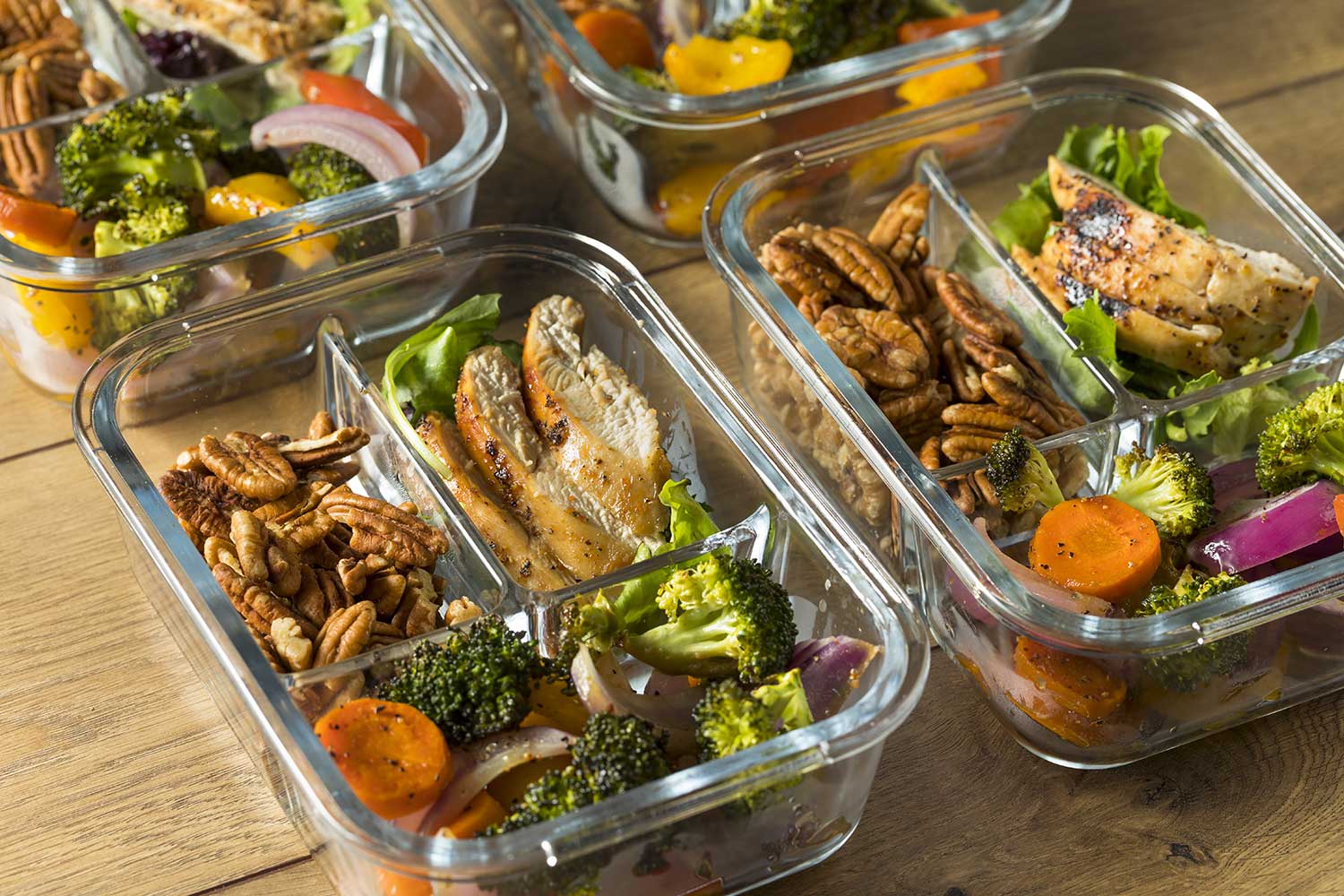
Clean Bulk vs. Dirty Bulk: Strength Gains
Clean bulking supports steady and sustainable strength gains. The emphasis on high-quality protein sources, such as chicken, fish, eggs, and legumes, provides the essential amino acids needed for muscle repair and growth. This approach ensures that muscle gains are not only significant but also functional and strong.
In contrast, dirty bulking can lead to rapid weight gain, including both muscle and fat. While strength may increase due to the higher calorie intake, the gains may not be as lean or functional. The excess fat gained during dirty bulking can also add strain to joints and negatively impact overall mobility and performance.

Clean Bulk vs. Dirty Bulk: Endurance
Clean bulking enhances endurance by providing the body with a balanced mix of macronutrients and micronutrients. The inclusion of a variety of whole foods ensures adequate intake of vitamins and minerals that support overall health and stamina. This balanced diet helps improve recovery times and reduces the risk of fatigue during long training sessions.
Dirty bulking, with its reliance on processed and high-calorie foods, can negatively affect endurance. The lack of essential nutrients and the potential for weight gain to outpace muscle growth can lead to decreased stamina and longer recovery times. This can hinder progress and performance in both aerobic and anaerobic activities.

Conclusion
In the context of clean bulk vs dirty bulk, performance in training is a key factor to consider. Clean bulking supports stable energy levels, sustainable strength gains, and improved endurance through a balanced and nutrient-dense diet. Dirty bulking, while potentially increasing weight and strength rapidly, can lead to energy fluctuations, decreased stamina, and less functional muscle gains due to the consumption of high-calorie, low-nutrient foods. Understanding these impacts can help you choose the best bulking strategy to optimize your training performance and achieve your fitness goals.
Clean Bulk vs. Dirty Bulk: Body Composition
When comparing clean bulk vs. dirty bulk, body composition is a crucial aspect to consider. Body composition refers to the ratio of lean muscle mass to body fat, and how each bulking approach affects this balance can significantly impact your overall physique and health.
Clean Bulk vs. Dirty Bulk: Lean Mass vs. Fat Mass
Clean bulking prioritizes a higher proportion of lean mass gain. By focusing on a moderate caloric surplus from nutrient-dense foods, clean bulking promotes muscle growth while minimizing fat gain. This approach ensures that the majority of weight gained is muscle, leading to a more defined and athletic physique. The quality of calories consumed—rich in proteins, complex carbohydrates, and healthy fats—supports efficient muscle repair and growth.
Dirty bulking, on the other hand, often results in a higher proportion of fat mass gain. The larger caloric surplus, achieved through high-calorie, low-nutrient foods, can lead to rapid weight gain that includes both muscle and a significant amount of fat. This method may increase overall body mass quickly, but it tends to compromise muscle definition and can result in a bulkier, less toned appearance.
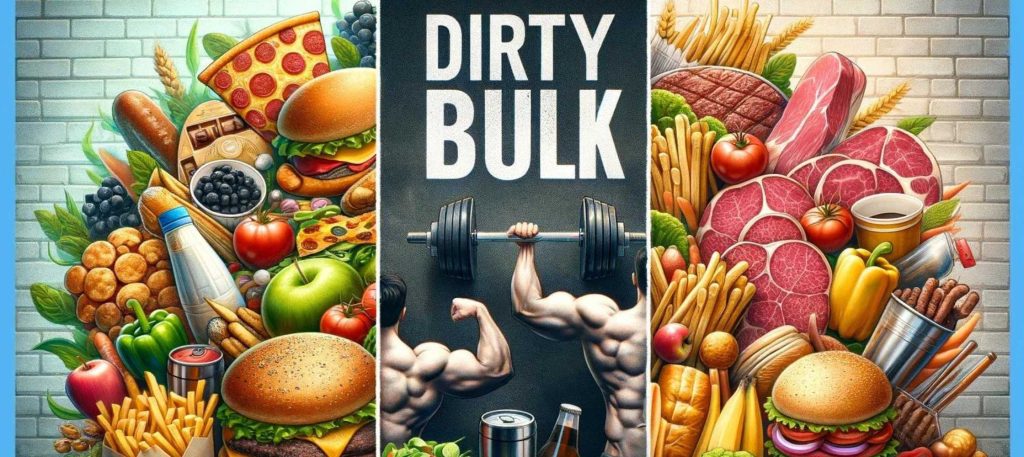
Clean Bulk vs. Dirty Bulk: Aesthetic Goals
For many individuals, achieving a lean, muscular appearance is a primary goal. Clean bulking aligns well with these aesthetic goals by promoting lean muscle gain and minimizing fat accumulation. The controlled caloric intake and emphasis on whole, unprocessed foods help maintain muscle definition and a sculpted physique.
In contrast, dirty bulking can obscure muscle definition due to the higher fat gain. While you may experience an increase in muscle mass, the excess fat can cover the muscles, making them less visible. This approach may be less desirable for those aiming for a lean and well-defined look.

Conclusion
In the debate of clean bulk vs dirty bulk, body composition is a key factor. Clean bulking supports a favorable lean mass to fat mass ratio, promoting muscle growth while keeping fat gain to a minimum. This approach helps maintain a defined and athletic physique. Dirty bulking, although it can lead to rapid weight gain, often results in a higher proportion of fat mass, compromising muscle definition and leading to a bulkier appearance. Understanding these differences can help you choose the best bulking strategy to achieve your desired body composition and overall fitness goals.

Clean Bulk vs. Dirty Bulk: Sustainability
When considering clean bulk vs dirty bulk, sustainability is an important factor to evaluate. Sustainability refers to how manageable and maintainable a bulking approach is over the long term, encompassing aspects such as diet adherence, lifestyle compatibility, and overall health.
Clean Bulk vs. Dirty Bulk: Long-term Adherence
Clean bulking emphasizes a balanced and nutrient-dense diet, which is generally easier to adhere to in the long run. By consuming a variety of whole foods, individuals can enjoy a wide range of flavors and textures, making the diet more enjoyable and less monotonous. Additionally, the moderate caloric surplus in clean bulking is less likely to cause discomfort or digestive issues, promoting consistent adherence.
Dirty bulking, on the other hand, often relies on high-calorie, low-nutrient foods that can be appealing in the short term but challenging to maintain over extended periods. The excessive intake of unhealthy foods can lead to feelings of sluggishness, digestive problems, and other health issues, making it harder to stick to the diet. This approach can also lead to rapid weight gain that may be difficult to manage over time.

Clean Bulk vs. Dirty Bulk: Lifestyle Compatibility
Clean bulking tends to be more compatible with a healthy lifestyle. The focus on whole foods, balanced nutrition, and moderate caloric intake aligns well with overall wellness goals. This approach encourages healthy eating habits that can be sustained even beyond the bulking phase, supporting long-term health and fitness.
Dirty bulking can be less compatible with a healthy lifestyle due to its reliance on processed, high-calorie foods. This approach may lead to unhealthy eating habits that are hard to break, even after the bulking phase. Additionally, the rapid weight gain and potential for increased body fat can negatively impact physical health and fitness levels, making it less sustainable in the long run.

Clean Bulk vs. Dirty Bulk: Overall Health
Clean bulking supports overall health by providing the body with essential nutrients needed for optimal function. The emphasis on nutrient-dense foods ensures that individuals receive a balanced intake of vitamins, minerals, and other important nutrients, promoting long-term health and well-being.
In contrast, dirty bulking can compromise overall health due to the consumption of unhealthy, high-calorie foods. This approach can lead to nutrient deficiencies, increased risk of chronic diseases, and other health problems. Maintaining overall health is more challenging when following a dirty bulking approach, making it less sustainable over time.

Conclusion
In the clean bulk vs dirty bulk debate, sustainability is a crucial consideration. Clean bulking promotes long-term adherence, lifestyle compatibility, and overall health through a balanced, nutrient-dense diet. Dirty bulking, while potentially leading to rapid weight gain, often relies on unhealthy eating habits that are difficult to sustain and can negatively impact health. Understanding these differences can help you choose the best bulking strategy to support your long-term fitness goals and overall well-being.
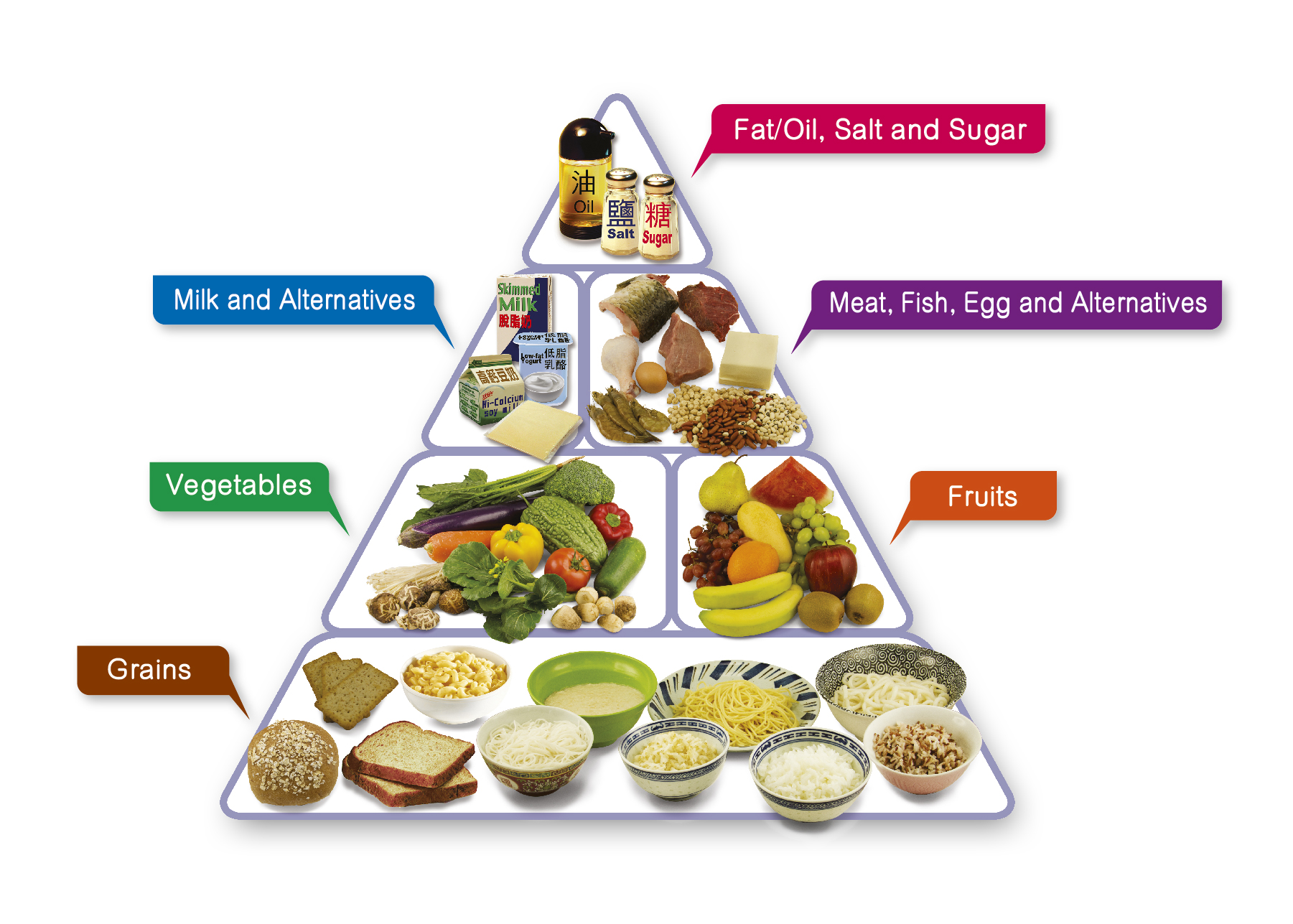
Clean Bulk vs. Dirty Bulk: Cost and Accessibility
When it comes to bulking up, two main strategies dominate the fitness landscape: clean bulking and dirty bulking. Each approach has its proponents and specific advantages, especially when considering cost and accessibility.
Clean Bulking
Clean bulking focuses on gaining lean muscle mass while minimizing fat gain. This method involves consuming nutrient-dense foods that are high in protein, complex carbohydrates, and healthy fats. Examples include lean meats, whole grains, fruits, vegetables, and quality supplements.
Cost Considerations:
- Food Quality: Clean bulking often requires higher-quality foods, which can be more expensive than processed alternatives.
- Supplements: Depending on individual nutritional needs, supplements like protein powders or specialized vitamins may add to the cost.
Accessibility:
- Nutrient Dense Foods: Access to fresh produce, lean meats, and whole grains is essential for clean bulking.
- Meal Preparation: Requires more planning and preparation time to ensure meals are balanced and nutritious.
Dirty Bulking
Dirty bulking, on the other hand, emphasizes calorie surplus without strict attention to food quality. It typically involves consuming large quantities of high-calorie foods, including fast food, sugary snacks, and processed carbohydrates.
Cost Considerations:
- Calorie Dense Foods: Dirty bulking can be initially cheaper due to the lower cost of calorie-dense, processed foods.
- Health Costs: Over time, potential health risks and medical expenses associated with poor nutrition may increase.
Accessibility:
- Convenience: Processed and fast foods are widely available and require minimal preparation.
- Short-term Gains: Easier to achieve calorie surplus and muscle gain in the short term.
Conclusion
Choosing between clean bulking and dirty bulking depends on individual goals, budget, and long-term health considerations. Clean bulking, despite being more expensive and requiring more effort, promotes better overall health and sustainable muscle gain. In contrast, dirty bulking offers a cheaper and easier short-term solution but may lead to health issues and a higher fat-to-muscle ratio.

Clean Bulk vs. Dirty Bulk: Examples of Clean Bulk Foods
Clean bulking revolves around consuming nutrient-dense foods that support muscle growth while minimizing fat gain. These foods provide essential nutrients without excessive calories from sugars and unhealthy fats, making them ideal for achieving lean muscle mass.
Protein Sources:
- Chicken Breast: High in lean protein and essential amino acids, chicken breast is a staple for muscle repair and growth.
- Fish: Varieties like salmon, tuna, and trout offer omega-3 fatty acids and quality protein.
- Eggs: A versatile protein source rich in vitamins, minerals, and healthy fats.
Carbohydrate Sources:
- Quinoa: A complete protein grain that provides complex carbohydrates and essential nutrients.
- Sweet Potatoes: Packed with vitamins, minerals, and fiber, sweet potatoes are excellent for sustained energy.
- Oats: High in fiber and complex carbs, oats promote stable blood sugar levels and muscle recovery.
Healthy Fats:
- Avocado: Rich in monounsaturated fats, vitamins, and minerals, avocado supports overall health and satiety.
- Nuts and Seeds: Almonds, walnuts, chia seeds, and flaxseeds offer healthy fats, protein, and antioxidants.
- Olive Oil: A source of heart-healthy monounsaturated fats, ideal for cooking and salad dressings.
Fruits and Vegetables:
- Berries: Blueberries, strawberries, and raspberries are packed with antioxidants and fiber.
- Leafy Greens: Spinach, kale, and Swiss chard provide vitamins, minerals, and phytonutrients.
- Broccoli: Rich in fiber, vitamins C and K, and antioxidants, broccoli supports overall health.
Dairy and Alternatives:
- Greek Yogurt: High in protein and probiotics, Greek yogurt aids in digestion and muscle recovery.
- Almond Milk: A dairy-free alternative rich in vitamins and low in calories.

Clean Bulk vs. Dirty Bulk: Examples of Dirty Bulk Foods
Dirty bulking focuses on consuming calorie-dense foods without strict regard to nutritional quality. While effective for gaining weight and muscle mass quickly, this approach often sacrifices long-term health benefits.
High-Calorie Foods:
- Fast Food Burgers: Cheeseburgers, fries, and milkshakes provide high calories from saturated fats and sugars.
- Pizza: Loaded with cheese, processed meats, and refined carbohydrates, pizza is a calorie-rich indulgence.
- Sugary Snacks: Cookies, candies, and pastries offer quick energy but lack essential nutrients.
Processed Carbohydrates:
- White Bread: Lacks fiber and nutrients compared to whole-grain options, contributing to rapid calorie intake.
- Instant Noodles: High in sodium and refined carbohydrates, instant noodles provide quick, calorie-dense meals.
- Potato Chips: Fried and salty, potato chips offer little nutritional value beyond calories.
Fried Foods:
- French Fries: Deep-fried in oil, French fries are high in calories and unhealthy fats.
- Fried Chicken: Breaded and fried chicken wings or nuggets are calorie-dense but lack nutritional value.
- Deep-Fried Snacks: Onion rings, mozzarella sticks, and other deep-fried snacks add calories and fats.
Sweets and Desserts:
- Ice Cream: Rich in sugar and fats, ice cream provides high calories and indulgent flavors.
- Cake and Pastries: High in refined sugars and fats, cakes and pastries contribute to rapid calorie intake.
- Chocolate Bars: Dense in calories from sugar and fats, chocolate bars are a quick energy source.

Clean Bulk vs. Dirty Bulk: Common Misconceptions
Clean bulking and dirty bulking are two distinct approaches to gaining muscle mass, each with its own set of misconceptions that can influence fitness enthusiasts’ choices and outcomes.
Misconceptions about Clean Bulking:
- Too Expensive: Many believe that clean bulking is prohibitively expensive due to the emphasis on quality foods like lean meats, fresh produce, and whole grains. While these foods may cost more upfront, they contribute to better overall health and sustained muscle gain.
- Complex and Time-Consuming: Clean bulking is often perceived as requiring extensive meal preparation and planning. While it does involve more thoughtful meal prep than dirty bulking, efficient planning can simplify the process and ensure balanced nutrition.
- Slow Muscle Growth: Some believe that clean bulking results in slower muscle growth compared to dirty bulking because it restricts calorie intake from unhealthy sources. However, clean bulking promotes lean muscle gain without excessive fat accumulation, which may lead to more sustainable results in the long run.
Misconceptions about Dirty Bulking:
- Faster Muscle Gain: Dirty bulking is often seen as a shortcut to rapid muscle gain due to its focus on calorie surplus from any source, including high-fat and high-sugar foods. While it can lead to quick weight gain, much of it may be in the form of fat rather than lean muscle.
- Less Effort Needed: Some perceive dirty bulking as requiring less effort since it allows for indulgence in less nutritious foods. However, this approach can lead to health issues such as nutrient deficiencies, high cholesterol, and insulin resistance over time.
- Short-Term Solution: Dirty bulking is sometimes viewed as a temporary strategy to quickly achieve muscle mass, with the assumption that dietary habits can be adjusted later. However, habits formed during dirty bulking can be challenging to change, potentially leading to long-term health consequences.
Conclusion
Understanding these misconceptions is crucial for making informed decisions about bulking strategies. Clean bulking emphasizes quality nutrition for sustainable muscle gain and overall health, despite initial perceived costs and effort. In contrast, dirty bulking prioritizes calorie surplus over nutritional quality, potentially compromising long-term health and fitness goals.

Clean Bulk vs. Dirty Bulk: The Conclusion
Choosing between clean bulking and dirty bulking ultimately boils down to individual priorities, goals, and long-term health considerations. Clean bulking, despite initial perceptions of higher cost and effort, offers numerous benefits such as sustained muscle gain, improved overall health, and long-term sustainability. By focusing on nutrient-dense foods and balanced nutrition, clean bulking supports muscle development while minimizing fat accumulation.
On the other hand, dirty bulking provides a shortcut to calorie surplus through indulgence in high-calorie, often nutritionally poor foods. While this approach may lead to rapid weight gain and muscle growth in the short term, it poses risks to cardiovascular health, insulin sensitivity, and overall well-being over time.
Understanding the misconceptions surrounding both bulking methods is crucial for making informed decisions that align with your fitness goals and values. Whether prioritizing health, performance, or aesthetics, choosing the right bulking strategy involves considering not only immediate results but also long-term impacts on your body and lifestyle.
By evaluating your nutritional needs, budget, and desired outcomes, you can tailor your bulking approach to achieve sustainable muscle growth while maintaining optimal health and well-being. Remember, the journey to a stronger, fitter physique is as much about nurturing your body with quality nutrition as it is about challenging it with effective training.
Embrace a bulking strategy that supports your long-term fitness goals and enhances your overall quality of life. Whether opting for clean bulking’s nutritional integrity or navigating the pitfalls of dirty bulking, your choices today shape your fitness journey tomorrow.


